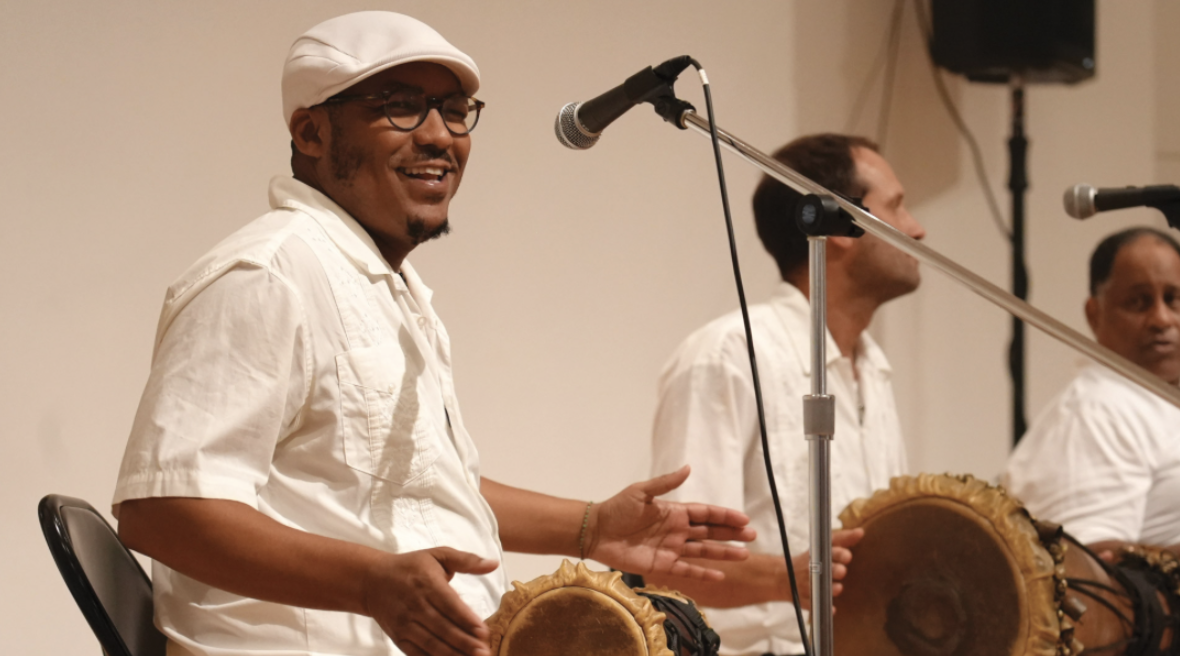Source: Explore Research at the University of Florida
How a UF center fuels the arts economy in Florida and beyond
The Center for Arts, Migration and Entrepreneurship director shares his hopes for the center’s scholars, how culture fuels the economy, and how a sandwich can be art.
He didn’t plan to return to his hometown, but when engineer, musician and administrator Oṣubi Craig saw the opportunity to lead UF’s Center for Arts, Migration and Entrepreneurship, he knew it was too good to pass up. CAME launched in 2020 to study and foster the cultural and economic contributions of diaspora communities, with faculty research, a Maker in Residence, new creative works and community outreach. Here, Craig shares his hopes for the center’s global network of scholars and artists, how culture fuels the economy, and how a sandwich can be art. Craig was recently recognized with the Win Phillips Town Gown Relations Award for his work fostering relationships between the community, artists, creatives and researchers to utilize the arts for positive social change.

Oşubi Craig
How do you explain the links between art, migration, and entrepreneurship?
The reason that people love Disney’s Food and Wine Festival is that you eat food from all over the world. It’s not just American food, it’s the fact that you get to taste food from everywhere. That speaks to the way in which we experience arts and culture. Food, music, dance, art — those are the sticky substances that keep people in communities. And when people are having arts experiences, the dollars that are churning inside of our community really begin to multiply. Americans for the Arts says that every dollar spent in an art space is circulated inside of our community at least six times. We want to figure out the ways that we cultivate environments for creativity and culture to flourish.
Why is that especially relevant in Florida?
When we look back at the recession of 2008, the economy and Wall Street going haywire, we were seeing those signs here in Florida before everybody else. Florida is a leader and a litmus test of what is going to be happening next. This intersection of arts, migration and entrepreneurship really defines what the new economy looks like, because there’s so many people, specifically from the Global South, coming to the States looking to build and chase the American dream. It is reshaping our state in really powerful and impactful ways. This uniquely situates culture makers to be on the forefront of growth and innovation. People don’t typically think of Florida as an art hub, yet the biggest art event in the world, Art Basel, meets in Miami every year. Florida is the true melting pot experience where art, migration, and entrepreneurship come together, and everyone wins in the process.
CAME has collaborations all over campus. How are you working across disciplines?
CAME has a robust Affiliate Faculty program made up of over 60 folks from all over the world, in and out of academia and across all disciplines. We’re working with one of our Affiliates on the pilot IGNITE program in the College of Engineering to bring creatives into the classroom to help students think outside the box through activating their creative energies. Similarly, we collaborate with the Center for Arts and Medicine through our SPARC352 program, using arts as a tool for engaging the greater Gainesville community around innovation, entrepreneurship and wellness. We are working on a project with our colleagues at IFAS to expand our research with SPARC352. We’re hoping to mobilize the relationships we’ve built and the networks IFAS has on the ground across the state to use arts programming as a bridge to engaging communities in a grassroots way that can improve outcomes in workforce development and wellbeing. It’s all really about leveraging not what arts is, but what arts can do when you bring the right people into the room to have a conversation.
What intrigued you about the opportunity to lead CAME?
The ambitious idea of creating a center like this was just incredible to hear about. And the opportunity to have a Maker in Residence for three years changes what’s possible because you get to go deeper. You have time for things to really marinate. As a drummer, engineer and Gainesville native, I jumped at the opportunity to lead this work in my community.
CAME’s first maker-in-residence, Qudus Onikeku, created Atunda, an artificial-intelligence-powered platform to copyright dance moves. What’s next?
We are negotiating funding with a major foundation to get 1,500 new dance moves into our AI protocol. We are really, really excited about what it represents — a tool to help dance artists document and get paid for their creations. We’re not just talking about protecting dance moves, we’re talking about protecting intellectual property. The management of the IP around digital spaces is going to represent significant economic opportunity for large companies. It’s also going to have to be mediated from a legal and technological standpoint. We’re going to provide people with a tool to say “I created this on this date, and I have proof.”
To read more, click here

